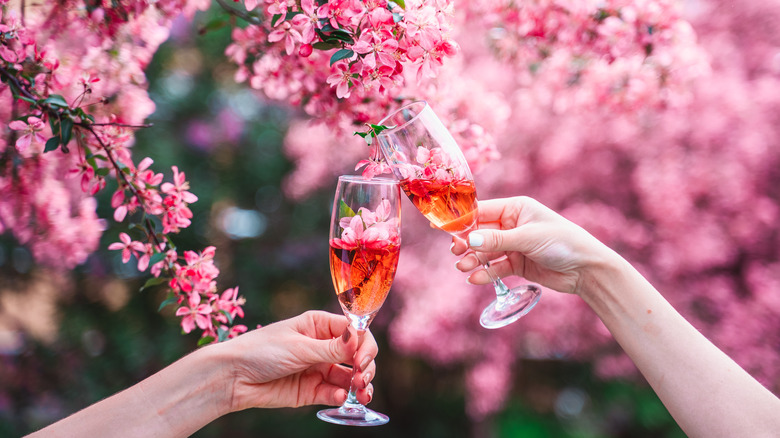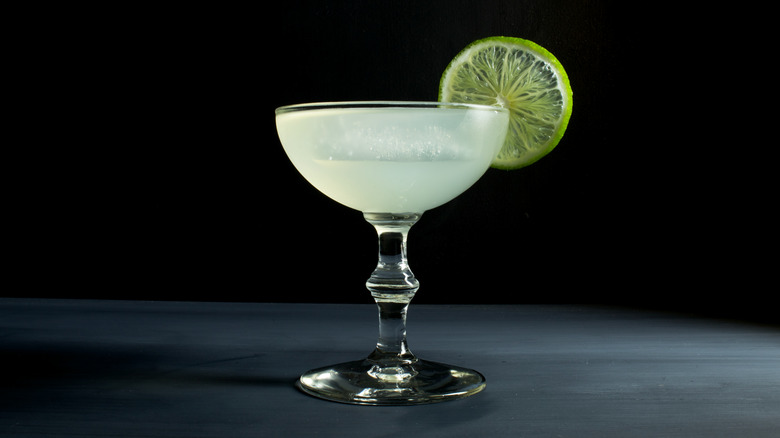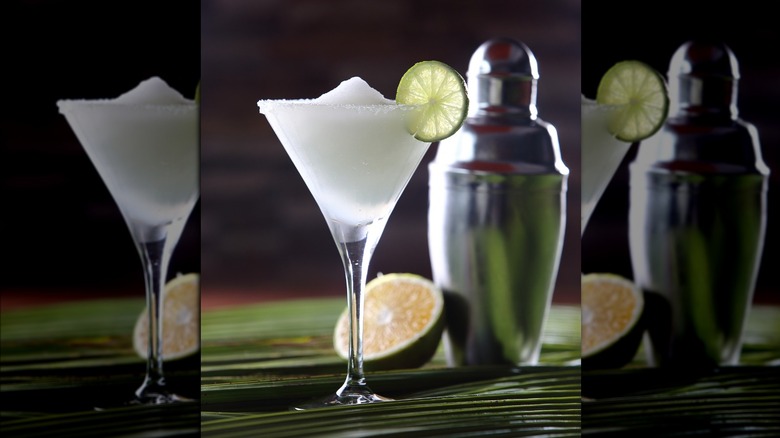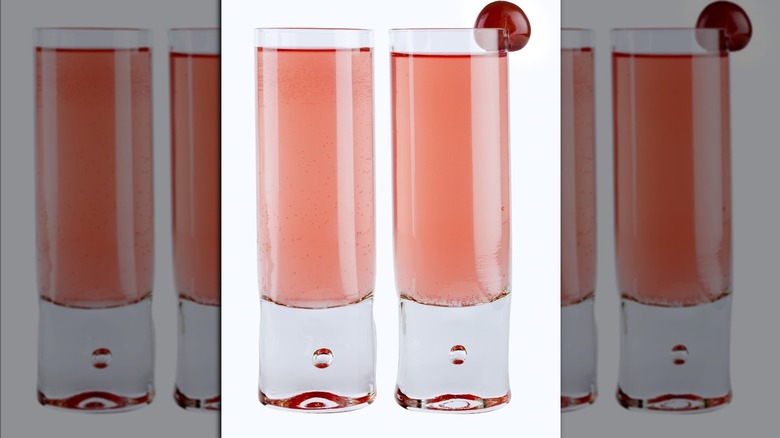The Best Gin Cocktails For Spring, According To An Expert
We may think of gin as a typically British tipple, though Sipsmith notes it's actually Dutch in origin. While Japan does not claim to have invented the beverage, it's becoming increasingly popular in the country, and the Japan National Tourism Organization says that over the past few years, Japanese craft distillers have been putting their own spin on the spirit by infusing it with unique ingredients including shikuwasa and kabosu fruits, green tea, and even oyster shells.
Kazuyuki Torii, technical advisor at Japanese distillery Suntory Spirits, tells Mashed that ROKU gin is made with six different botanicals (in addition to the traditional gin botanicals), these being yuzu peel, sansho peppers, gyokuro tea, sencha tea, and both the leaves and flowers of the sakura (ornamental cherry) tree (via Suntory). When he describes why these last two ingredients are used, he gets downright poetic. "Springtime is a time of reawakening and celebration," he tells us, "The cocktails we sip during spring should reflect the season's soft sweetness, floral aromas and vibrancy [with gentle yet complex flavors] that embody the spirit of blossoming life and the soft colors blooming around us." Sakura, which he explains bloom for just a few short days, have a "gentle and fleeting temporality [that] is a perfectly distilled experience of springtime beauty." Suntory picks the flowers during their brief peak bloom and then rushes them to their Osaka distillery to incorporate them into the only gin that Torii feels "can capture a crisp spring day in a pour."
The gin gimlet is a classic
The gimlet is a classic cocktail that's been around for ... no one seems to know exactly how long. Some say the combination of gin and lime juice originated with British sailors wishing to ward off scurvy, although Slate notes that the best-known recipe for this drink, one involving Rose's lime juice in addition to the fresh fruit, made its first appearance in Raymond Chandler's 1953 mystery novel The Long Goodbye. While the gimlet never went away, the craft cocktail movement brought increased popularity to this old standby as bartenders tinkered with it by adding such hipster-approved ingredients as elderflower liqueur, habanero peppers, cucumber, and fresh basil. (Rachael Ray's husband makes his with thyme, but he uses vodka instead of gin.)
If you wish to use a floral-forward gin such as ROKU, Torii suggests you "use less syrup and finish it dry" in order to better appreciate the "soft flavor and slight sweetness" of the liquor itself. His recipe calls for using 2 ounces of gin, 4 teaspoons of lime juice (this is a 3:1 ratio of gin to lime), plus 1 teaspoon of simple syrup. Shake these ingredients over ice, strain into a chilled coupe glass, and then garnish with a slice of lime.
The white lady is very adaptable
The white lady, according to Esquire, dates back to 1919. It was invented by bartender Harry MacElhone, creator of several other vintage cocktails, including the gin-based Sidecar and French 75. (He was also the Harry of Harry's New York Bar in Paris, one of Ernest Hemingway's favorite watering holes.) While McElhone's original white lady recipe called for crème de menthe as one of the ingredients, a later recipe that became the standard one consisted of nothing but gin, Cointreau (an orange liqueur), lemon juice, and an egg white.
Torii's recipe omits the egg white, but otherwise, it's a classic white lady: two parts gin, one part white Curacao or triple sec, and one part lemon juice, shaken over ice and then strained into a cocktail glass. The fun thing about this basic recipe, however, is that it can easily be customized. Torii suggests that you "enjoy 'shun', the feeling of the season, by changing out Curacao for various liqueurs such as sakura, matcha, white peach, and yuzu in each season."
The sakura shower is something a little different
If you're more into bitter than sweet, you might enjoy the ROKU Sakura Shower cocktail Torii shared with us. One of its ingredients is Dubonnet, a fortified wine that contains the medicinal compound quinine and is used to make Queen Elizabeth II's favorite cocktail. The drink also includes the notorious "green fairy," absinthe, as well as a dash of bitters. In order to make it, you'll combine 4 parts of gin with 2 parts Dubonnet and 1 part absinthe and then sprinkle in the bitters (Bob's Abbotts, for preference).
While that flavor combo might come across as kind of harsh, piling one acerbic flavor on top of another, evidently it smells wonderful. Torii, who may have missed his true calling as a wordsmith, describes the drink with this enchanting image: "An enticing sakura-esque aroma lingers just beyond the tip of your nose, as if the petals are falling around you." Gin drinker or not, that's a mental picture you're going to want to keep in mind every time life gets stressful.



